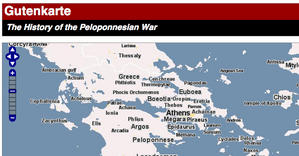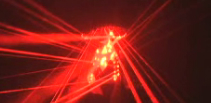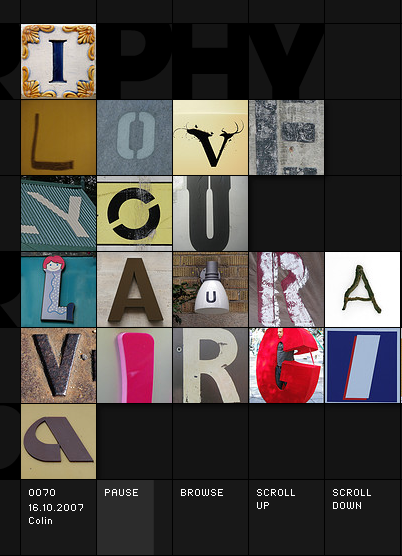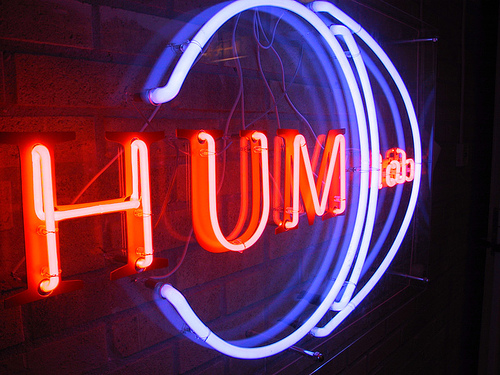Following the last post I thought I would blog some locative text and art projects.
 Hello, world! is a work mowed into a field that encodes in Semacode the universal programmers greeting, “Hello, world!”
Hello, world! is a work mowed into a field that encodes in Semacode the universal programmers greeting, “Hello, world!”
 Eternal Sunset shows you webcam images of the sunset wherever it is happening at the time you visit. (This one is from Norway.)
Eternal Sunset shows you webcam images of the sunset wherever it is happening at the time you visit. (This one is from Norway.)
 Grafedia is a site where people can send emails with a word they have seen written in blue and underlined on the street. They then get back images associated with those words.
Grafedia is a site where people can send emails with a word they have seen written in blue and underlined on the street. They then get back images associated with those words.
 About Google Maps hacks for Sonar is just one post from a group blog with a lot of posts on the category locative.
About Google Maps hacks for Sonar is just one post from a group blog with a lot of posts on the category locative.
 Gutenkarte is built on MetaCarta and lets you see a map with the locations important to a text as Google Books does. They process the text, identify locations in the text and then map them. It would be neater if they let users run a text through.
Gutenkarte is built on MetaCarta and lets you see a map with the locations important to a text as Google Books does. They process the text, identify locations in the text and then map them. It would be neater if they let users run a text through.


 Typography Kicks Ass: Flickr Bold Italic
Typography Kicks Ass: Flickr Bold Italic









 This weekend I participated in an
This weekend I participated in an 